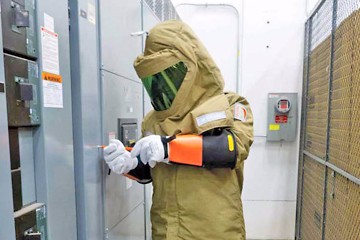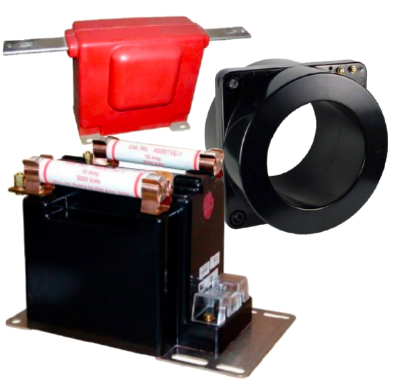Why Do Arc Flashes Happen? Hazard Prevention

CSA Z462 Arc Flash Training - Electrical Safety Essentials
Our customized live online or in‑person group training can be delivered to your staff at your location.

- Live Online
- 6 hours Instructor-led
- Group Training Available
Download Our NFPA 70E Fact Sheet – 2024 Electrical Safety Edition

- Understand how NFPA 70E works with NEC and NFPA 70B standards
- Clarify the shared responsibility between employers and employees
- Learn how NFPA 70E supports OSHA compliance
Arc flashes happen when electrical current jumps through air due to equipment failure, human error, or insulation breakdown, releasing dangerous heat, intense light, and explosive pressure that can injure workers and damage equipment.
Why Do Arc Flashes Happen?
A dangerous arc flash can result from multiple electrical faults and safety oversights:
✅ Caused by insulation failure, dust, corrosion, or accidental contact
✅ Triggered by voltage spikes, loose connections, or dropped tools
✅ Releases intense heat, pressure, and light in milliseconds
Request a Free Training Quotation
These violent electrical events occur when an unintended path forms between energized conductors or from a conductor to the ground, allowing electricity to escape in the form of a high-energy arc. In fractions of a second, this uncontrolled discharge can generate heat exceeding 35,000°F, light brighter than the sun, and explosive pressure waves capable of throwing shrapnel. Understanding the root causes helps prevent injuries, protect equipment, and maintain electrical system reliability.
One of the main reasons arc flashes happen is when a phase-to-phase fault creates an unintended electrical arc, allowing high current to escape its normal path and discharge violently into the air. This type of electrical explosion produces intense heat and pressure, resulting in an accompanying arc blast that can throw shrapnel, damage equipment, and rupture eardrums. The risk of uncontrolled discharge is especially high in systems with high fault current capacity and when proper safety procedures outlined in NFPA 70E or CSA Z462 are not followed. Understanding the dangers of electrical explosions is critical to preventing these events, as the impact can be catastrophic to both personnel and infrastructure. A key distinction is explained on Arc Flash vs Arc Blast, showing how pressure waves add to the danger of arc flash incidents.
Sign Up for Electricity Forum’s Arc Flash Newsletter
Stay informed with our FREE Arc Flash Newsletter — get the latest news, breakthrough technologies, and expert insights, delivered straight to your inbox.
Common Causes of Hazardous Events
One of the main reasons arc flashes happen is when a phase-to-phase fault or phase-to-ground fault creates an unintended electrical arc. This allows high current to escape its normal path and discharge violently into the air. The resulting arc blast can throw molten metal, damage switchgear, and rupture eardrums. The risk of uncontrolled discharge is especially high in systems with high fault current capacity and where NFPA 70E and CSA Z462 arc flash safety procedures are not followed.
Common triggers include:
-
Dust and Impurities: Dust, corrosion, or moisture can reduce the effectiveness of insulation.
-
Accidental Contact: Dropped tools or proximity to conductive objects can initiate arcing.
-
Equipment Failure: Worn insulation, aged breakers, or loose connections.
-
Improper Maintenance: Poorly maintained switchgear, panels, and enclosures.
-
Human Error: Working on energized equipment without proper PPE or hazard assessment.
Explore the role of electrical explosions in arc flash events and how they threaten safety by visiting our Electrical Explosion page.
Why Do Arc Flashes Happen? Causes, Consequences and Mitigation
| Cause | Potential Incident Energy (cal/cm²) | Possible Consequences | Mitigation Measures |
|---|---|---|---|
| Dust, Corrosion, or Moisture | 4–12 (varies with fault level) | Reduced insulation strength, increased likelihood of arcing faults | Regular cleaning, environmental controls, sealing enclosures |
| Accidental Contact (tools, conductive objects) | 8–20 | Direct arc initiation, severe burns, equipment damage | Maintain approach distances, use insulated tools, follow NFPA 70E boundaries |
| Equipment Failure (worn insulation, aged breakers) | 8–25 | Short circuits, high incident energy release, arc blast | Preventive maintenance, periodic testing, timely equipment replacement |
| Improper Maintenance | 10–30 | Increased arc flash probability, unexpected breaker trip times | Follow manufacturer service schedules, infrared inspections, torque checks |
| Human Error (unsafe work practices) | 12–40+ | Severe burns, hearing damage, fatalities | Lockout/tagout, PPE compliance, worker training per NFPA 70E/CSA Z462 |
Understanding Arc Fault Energy and Thermal Pressure Hazards
An arcing fault is the root of every high-energy arc flash — where electrical current leaves its intended path and ionizes the air. When air’s dielectric strength breaks down (often from insufficient spacing, degraded insulation, or mechanical damage), current flow escalates.
Incident energy, measured in calories per square centimeter (cal/cm²), determines PPE requirements under NFPA 70E. For example, an ATPV rating of 8 cal/cm² requires Category 2 PPE; 25 cal/cm² or higher may require a full Category 4 suit with hood.
Arc flash boundaries — Limited, Restricted, and Prohibited — define safe approach distances:
-
Limited Approach: Distance from exposed energized parts where a shock hazard exists; unqualified persons must stay outside without escort.
-
Restricted Approach: Closer proximity where increased shock risk requires additional PPE and training.
-
Prohibited Approach: Distance equivalent to making direct contact; crossing requires the same precautions as physically touching the conductor.
These boundaries are calculated using IEEE 1584 equations, which factor in system voltage, available fault current, equipment configuration, and arc duration. A simplified IEEE 1584 incident energy formula is:
Incident Energy (cal/cm²) = (k × V × I × t) / D²
Where:
-
k = constant based on system type and units
-
V = system voltage
-
I = fault current in kA
-
t = arc duration in seconds
-
D = working distance in centimeters
Learn more in our Arc Flash PPE Clothing guide.
Preventive Equipment Standards: NFPA 70E and IEEE 1584
-
NFPA 70E – Defines safe work practices, PPE categories, and approach boundaries.
-
CSA Z462 – Canadian equivalent to NFPA 70E, with harmonized PPE and hazard labelling standards.
-
IEEE 1584 – Provides formulas for calculating incident energy and arc flash boundaries based on system parameters.
Following these standards is critical for controlling arc flash hazards. A thorough arc flash analysis will use IEEE 1584 equations to set safe working distances and PPE requirements.
Contributing Factors That Increase Risk
Environmental and system-specific conditions can amplify arc flash risk:
-
High fault current levels (common in large industrial facilities)
-
Improperly set protective relays or breakers
-
Working on or near energized panels without lockout/tagout
-
Lack of hazard warning labels or updated arc flash assessments
These conditions make preventive maintenance and periodic hazard studies essential.
Preventing Arc-Related Hazard Incidents
Prevention requires a multi-layered approach:
-
De-energize equipment whenever possible before performing maintenance
-
Conduct regular power system studies to update hazard levels and incident energy values
-
Apply PPE and labelling per NFPA 70E or CSA Z462 requirements
-
Train all qualified electrical workers on arc flash awareness and safe work practices
-
Maintain electrical equipment per manufacturer specifications and industry standards
Arc flashes result from failures in insulation, unsafe work methods, and environmental conditions that allow energy to escape in a destructive arc. With proper maintenance, hazard assessment, and compliance to NFPA 70E, CSA Z462, and IEEE 1584, these events are largely preventable.
Electricity Today T&D Magazine Subscribe for FREE

- Timely insights from industry experts
- Practical solutions T&D engineers
- Free access to every issue








